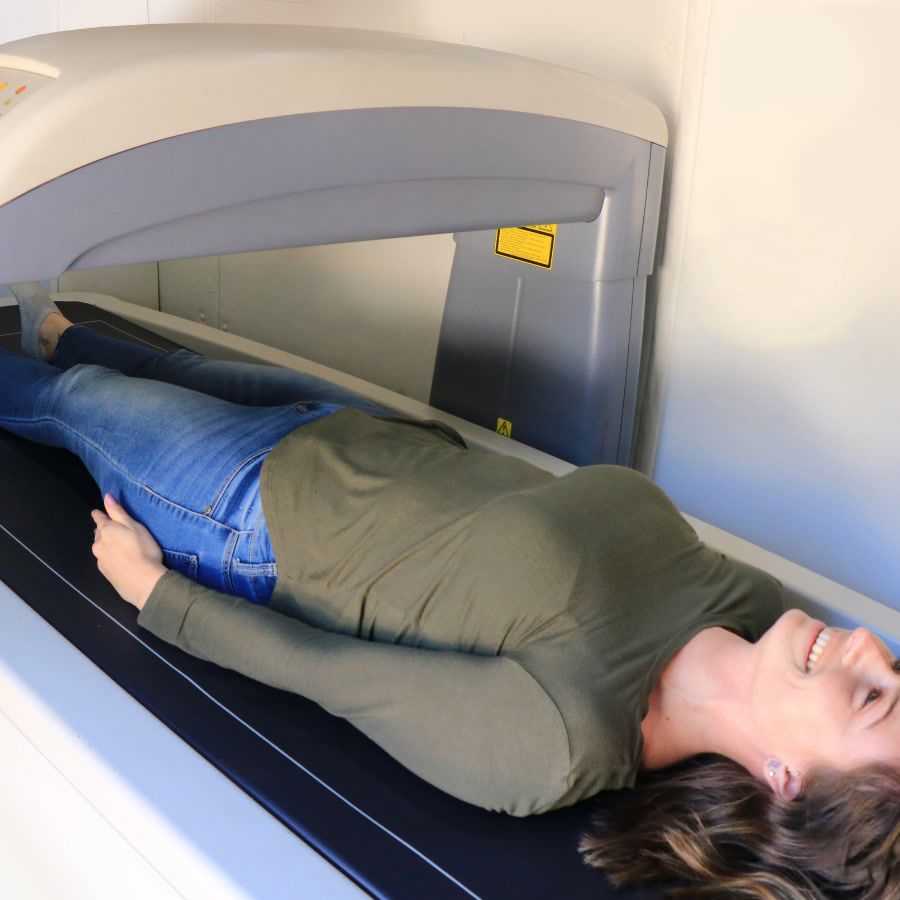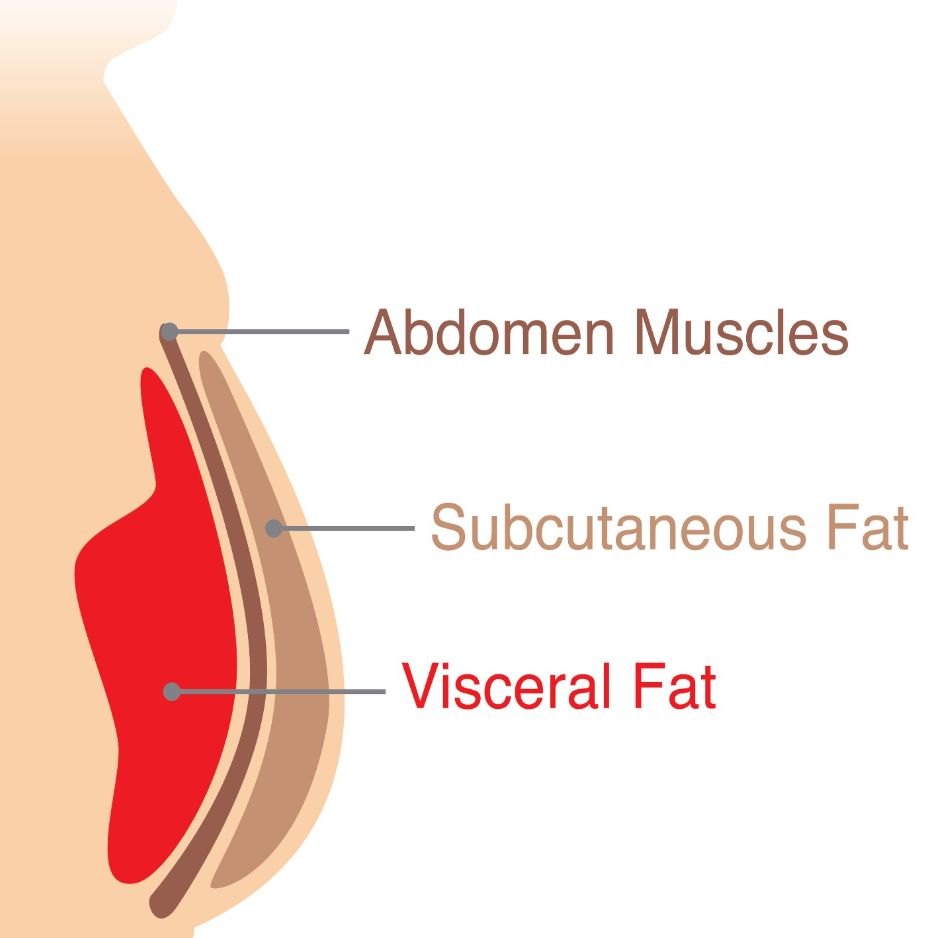Dynamic Warm-Up: 11 Exercises and How-To Guide

Dynamic Warm-Up: 11 Exercises & How-To Guide
If your warm-up only consists of brief static stretches, you may be missing key opportunities to improve performance. A smart dynamic warm-up raises body temperature, activates the right muscles, and rehearses the exact movements you’re about to do—so you feel springy, stable, and ready to go.
In this guide, you’ll get:
- What a dynamic warm-up is (and why it beats static stretching before workouts)
- Science-backed benefits and ideal duration
- A plug-and-play structure you can finish in 5–15 minutes
- 11 exercises with cues, progressions, and joint-friendly modifications
- Sport-specific templates for running, lifting, and field sports
Along the way, we’ll link to authoritative guidelines and research so you can customize your routine with confidence.
What is a dynamic warm-up?
A dynamic warm-up is a short series of moving drills that gradually increase intensity and mimic your upcoming activity. The goal is to prepare—not fatigue—your body through general movement, joint mobility, muscle activation, and then activity-specific patterns. Professional guidelines commonly recommend a brief general warm-up followed by dynamic movements and sport-specific reps, rather than long static holds before training (NSCA introduction to dynamic warm-ups).
Why prioritize dynamic over static stretching before you train?
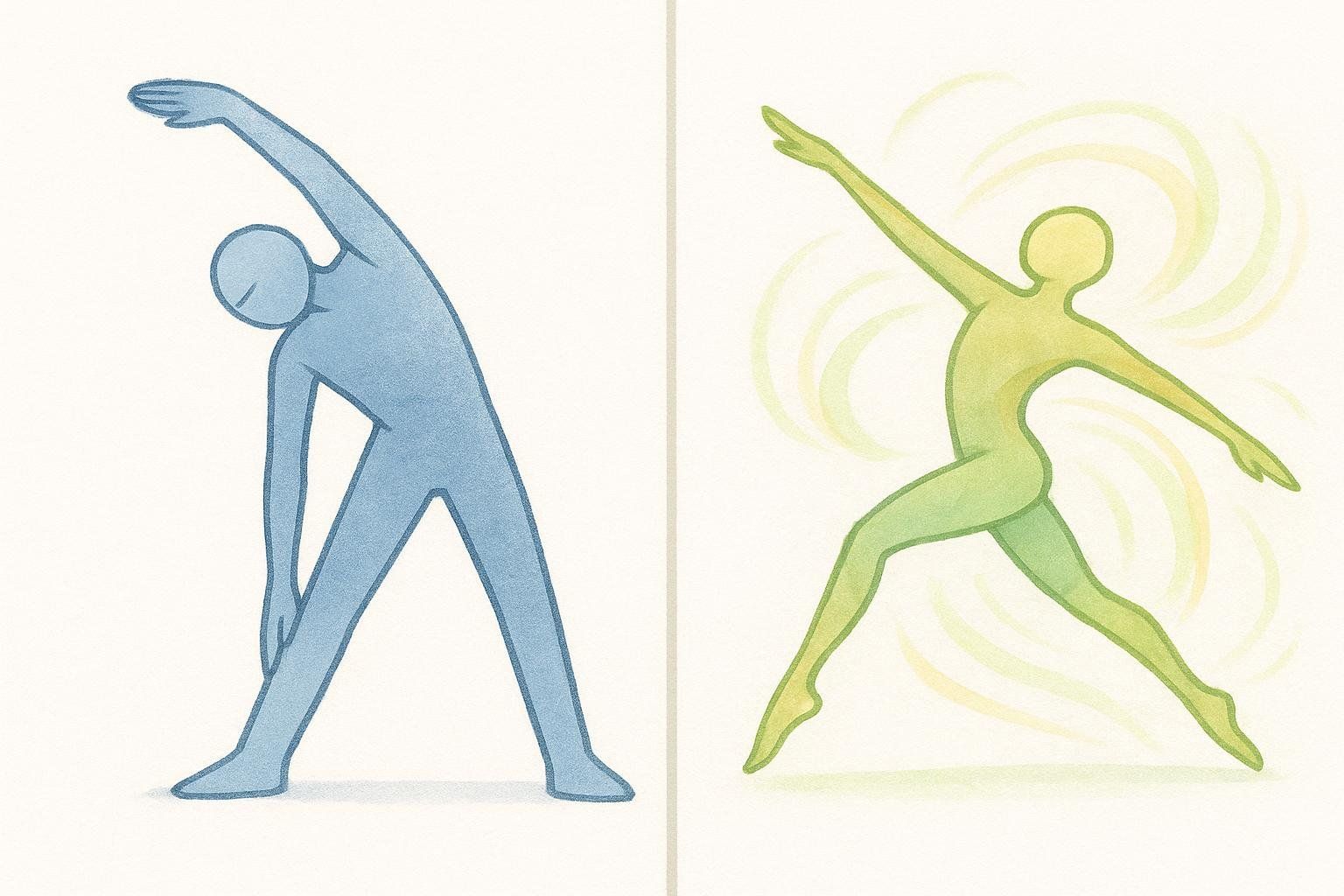
- Static stretching can temporarily reduce strength and power when held too long immediately before explosive activity; dynamic movements tend to preserve or improve subsequent performance (NSCA Coach: Dynamic Warm-Ups for Land-Based Athletes).
- Short, low-intensity static stretches (< 90 seconds total per muscle) do not consistently impair performance and can be included judiciously, especially for sports needing extra range of motion (Behm & Chaouachi review). Evidence also suggests that including activity-specific dynamic movements in the warm-up is a key driver of sprint performance improvements, even when brief static stretching is present (study on stretching within warm-ups).
- The best-practice sequence most people will benefit from: elevate temperature → dynamic mobility → activation → activity-specific practice (NSCA Foundations of Fitness Programming).
How long should a dynamic warm-up take?
Plan on 5–15 minutes. Start with 3–5 minutes of general movement (walk, jog, bike, jump rope), then 5–10 minutes of dynamic mobility, activation, and activity-specific drills. That general-to-specific ramp is a staple recommendation in strength and conditioning texts and articles (NSCA guidelines on time-efficient training).
Pro tip: Finish the warm-up no more than ~15 minutes before the first working set or the start of your session so the benefits carry over.

Safety note: If joint sensitivity or arthritis is a factor, keep ranges smaller, move slower, and choose upright, supported variations (e.g., high-stepping near a wall, step-over drills) as suggested by the Arthritis Foundation's dynamic warm-up recommendations.
Top 11 Dynamic Warm-Up Exercises (with progressions and modifications)
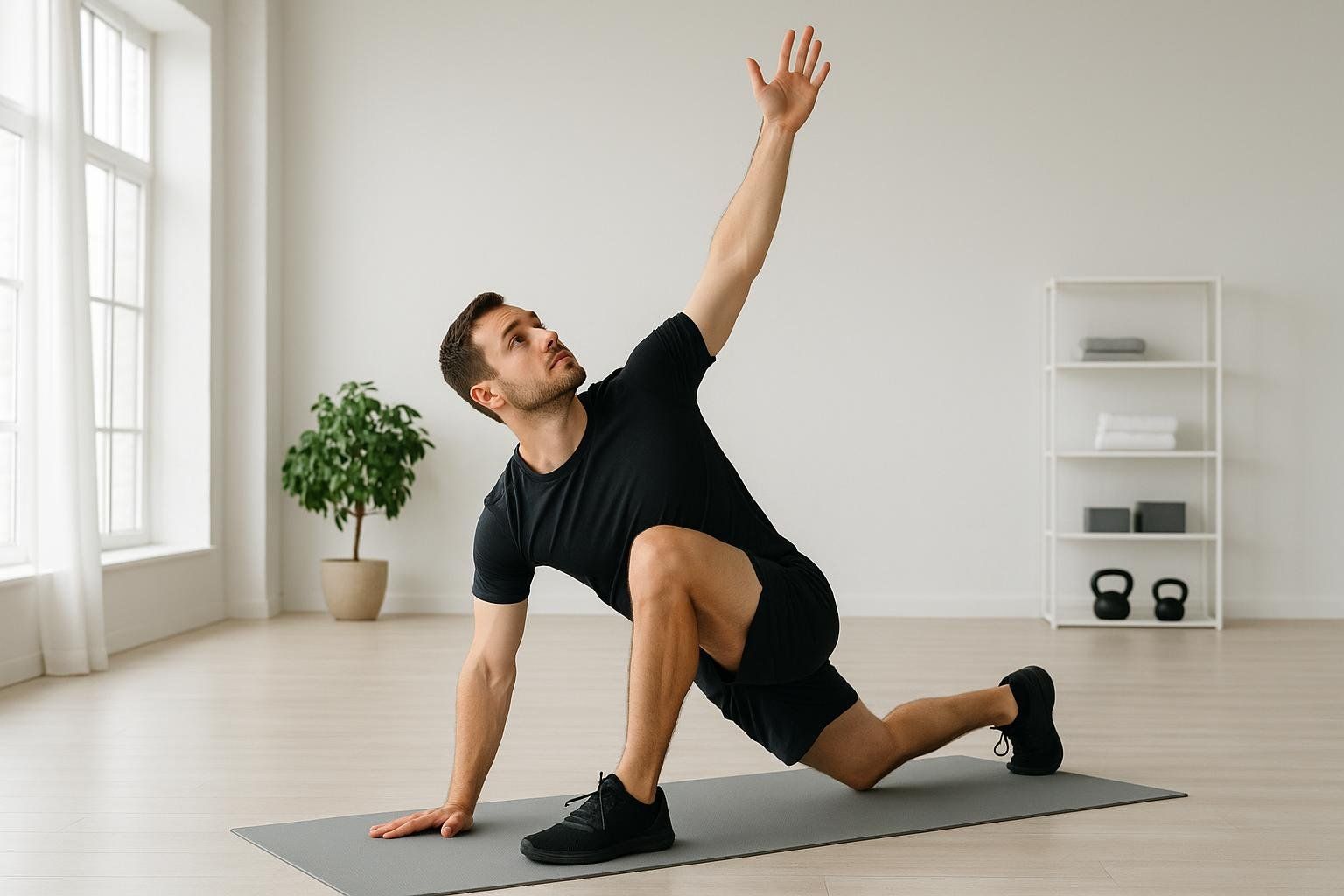
Use 6–8 of these to build your warm-up. Follow the cues; pick the progression that suits your level today.
- Marching Knee Hugs
- Targets: Hips, glutes, balance
- How: Stand tall. Pull one knee toward your chest while staying upright; alternate sides.
- Progressions: Add rhythmic arm drive; progress to skipping with a knee lift (high skips)
- Tip: Keep ribs down; avoid leaning back.
- Leg Swings (Front–Back and Side–Side)
- Targets: Hamstrings, hip flexors, and adductors
- How: For front-to-back swings, face a support and swing one leg forward and back, keeping the torso tall. For side-to-side swings, stand side-on to the support and swing one leg across your body and then out to the side. Use a comfortable, pain-free range.
- Progressions: Small → medium → larger arcs
- Mod: Use a smaller, pain-free range of motion or substitute with Hip Circles if swings are uncomfortable.
- Inchworm
- Targets: Shoulders, core, hamstrings
- How: Hinge forward and walk your hands to a plank. Hold briefly, then walk your hands back toward your feet and stand up.
- Progressions: Add a push-up in the plank; add a thoracic-spine (T-spine) reach at the top
- Tip: Keep hips level in the plank.
- World’s Greatest Stretch
- Targets: Hips, upper-back rotation, hamstrings
- How:
- Step into a long lunge.
- Bring your elbow toward your instep.
- Rotate your chest open toward the front knee and reach your arm up.
- Place your hand down, then straighten the front leg for a brief hamstring stretch.
- Bend the knee and return to the lunge; switch sides.
- Progressions: Slow the tempo; add an overhead reach
- Walking Lunge with Rotation
- Targets: Quads, glutes, core
- How: Step forward into a lunge with both knees near 90°. Rotate your torso over the front knee. Push off the back foot, bring it forward, and step directly into the next lunge on the other side.
- Progressions: Add an overhead reach; use a light medicine ball
- Tip: Front knee tracks over the middle toes.
- Hip Circles and Arm Circles (Arthritis-friendly)
- Targets: Hips and shoulders
- How: Draw small-to-moderate circles with your hips and arms while standing tall. Hold a stable support if needed.
- Mod: Keep ranges modest and pain-free. These are joint-friendly options for sensitive knees, hips, or shoulders.
- Heel-to-Toe Walks
- Targets: Ankles, calves, and small muscles in the feet
- How: Walk forward, rolling smoothly from heel to toe on each step.
- Progressions: Add a slight knee drive
- Mod: Use a wall for balance if needed
- A-Skips or Fast High Knees (Short Distance)
- Targets: Coordination, cadence, hip flexors
- How: Perform 10–20 m bouts with quick, light ground contacts and an upright posture.
- Progressions: Start with A-skips; progress to high knees; finish with 1–2 faster strides
- Lateral Shuffle with Hip Hinge Touch
- Targets: Inner and outer thighs (groin and hip stabilizers)
- How: Shuffle 3–4 steps to one side. Hinge at the hips to touch your shin with the opposite hand. Shuffle back and repeat.
- Progressions: Increase speed; add a mini-band above the knees
- Glute Bridge or Single-Leg Bridge March
- Targets: Glutes, hamstrings, and core stabilizers
- How: Lie on your back, feet flat. Lift your hips into a bridge. Hold and slowly march one knee toward your chest, then switch.
- Progressions: Start with two legs; progress to single-leg bridges; add a band around the knees
- Scapular Push-Up
- Targets: Muscles around your shoulder blades and shoulders
- How: From a plank, keep arms straight and move only your shoulder blades—push the floor away (protract) and then let the chest sink slightly (retract). Maintain a neutral spine.
- Progressions: Add alternating T-spine reaches; progress to full push-ups
Finish with activity-specific practice (the last 2–4 minutes)
After your general dynamic drills, rehearse the exact movement you’re about to perform:
- Runners: 3–4 strides of 60–100 m building to ~85% effort
- Lifters: 2–3 light sets of your first lift for 5–8 reps
- Field/court sports: 3–5 short accelerations, cuts, or jump landings at game-like speed
End the warm-up feeling fast and snappy—not fatigued.
Sport-specific warm-up templates (steal these)
Choose one template and scale volume to fit 5, 10, or 15 minutes by adding sets or distance.
Template A — Running (5–10 minutes)
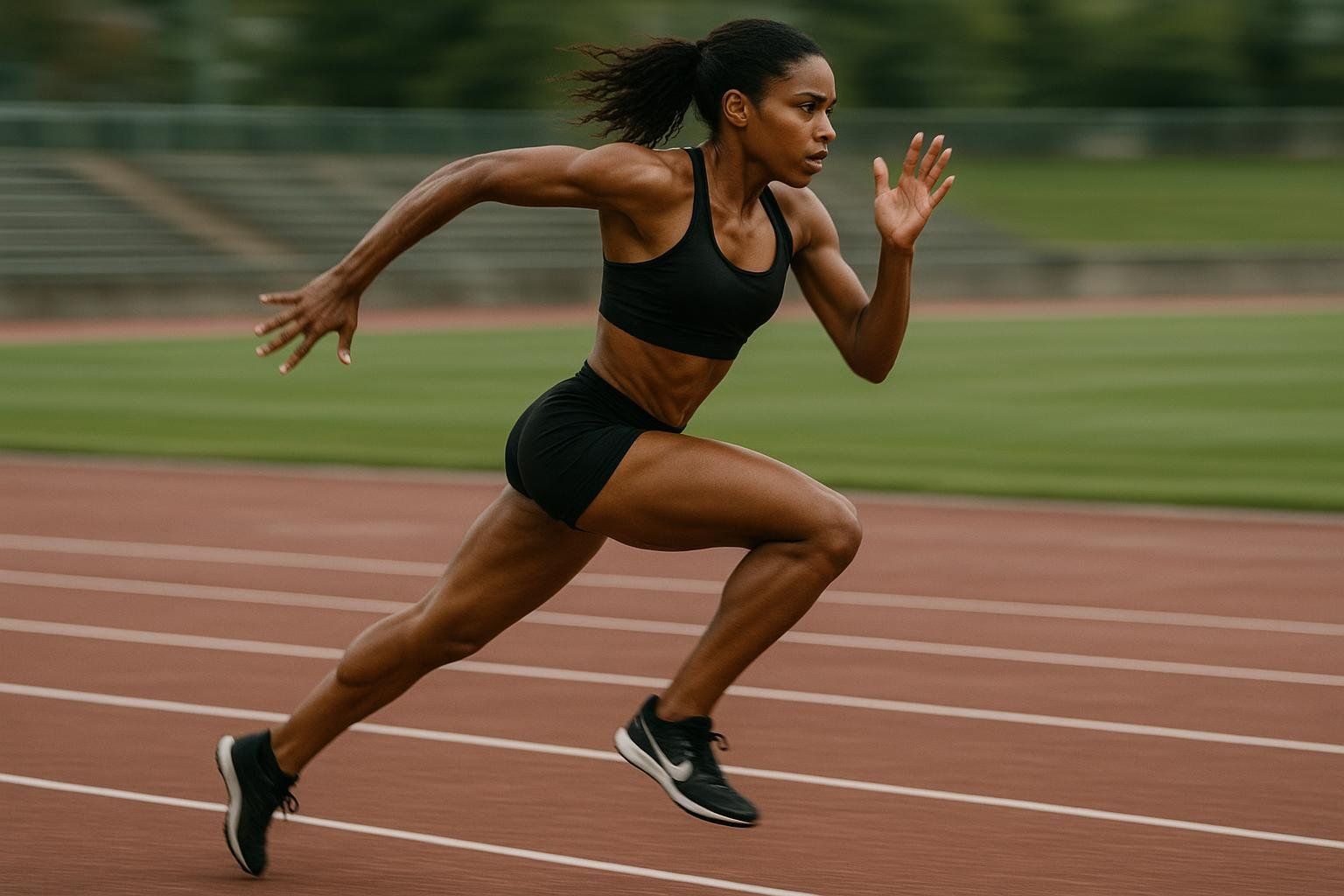
- Brisk walk or easy jog – 2–3 min
- Leg swings (front/back, side/side) – 10 each
- World’s Greatest Stretch – 2 each side
- A-skips or high knees – 2×15–20 m
- Strides – 3×60–80 m building to ~85%
- For more runner prep, see our Mobility Flow for Runners and beginner plan: How to Start Running (8-Week 5K).
Template B — Strength Day (5–10 minutes)

- Bike or jump rope – 2 min
- Inchworm – 4 reps
- Walking lunge with rotation – 6 per side
- Glute bridge march – 10 per side
- 2× light sets of your first lift (e.g., squat or press) for 5–8 reps
- Pair with Strength Training for Runners if you run and lift.
Template C — Field/Court Sports (10–15 minutes)
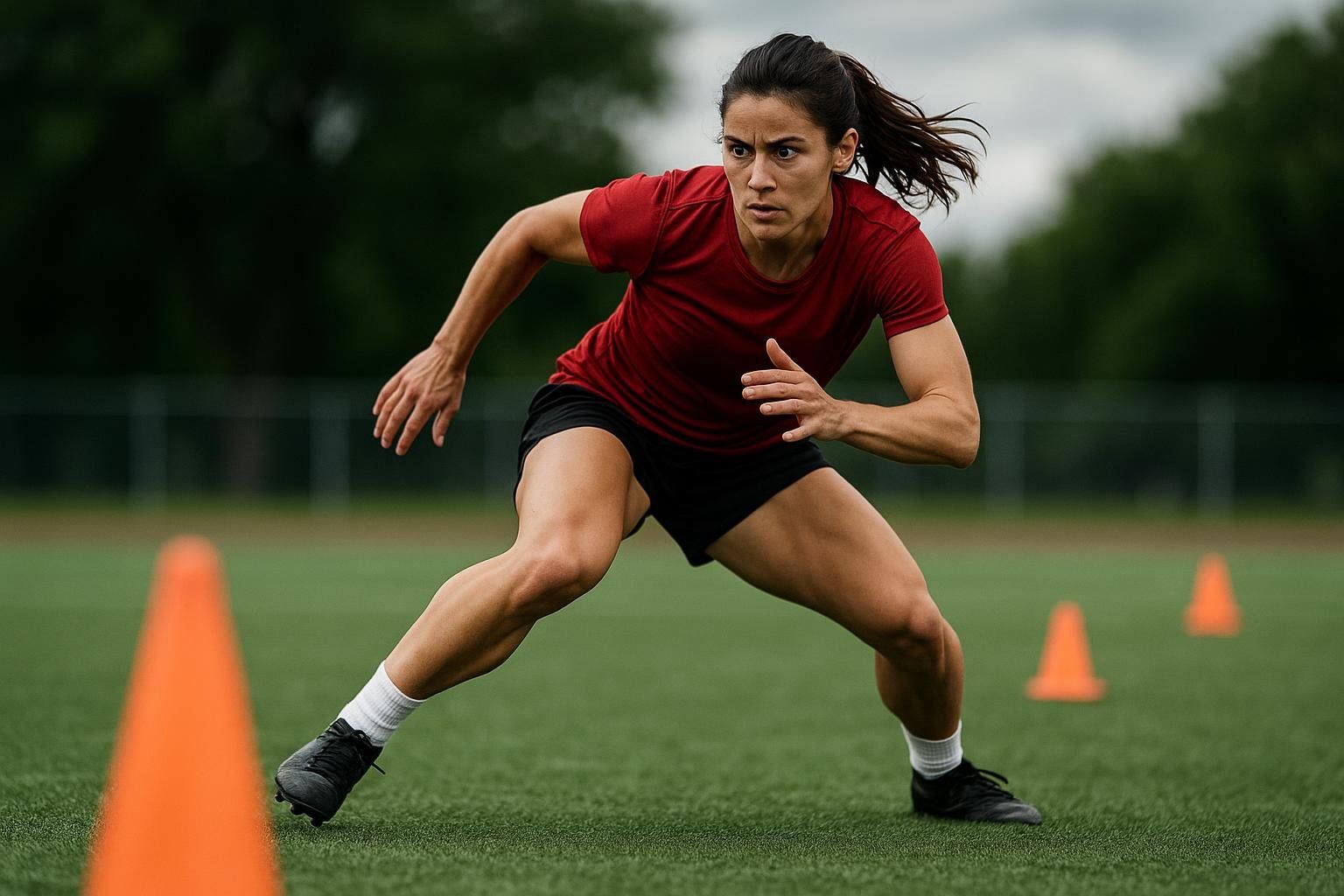
- Jog + arm circles – 2 min
- Lateral shuffle with hinge touch – 2×10 m each way
- High knees → butt kicks – 2×15 m each
- Walking lunge with rotation – 6 per side
- Plant-and-cut rehearsal or acceleration drills – 3×10–20 m
Time-crunched? Try the 5-minute “Minimum Effective Warm-Up”
- 60 s brisk walk/jog
- 60 s World’s Greatest Stretch (alternating)
- 60 s walking lunges with reach/rotation
- 60 s A-skips or high knees
- 60 s activity-specific reps (strides or light sets)
Common warm-up mistakes (and quick fixes)
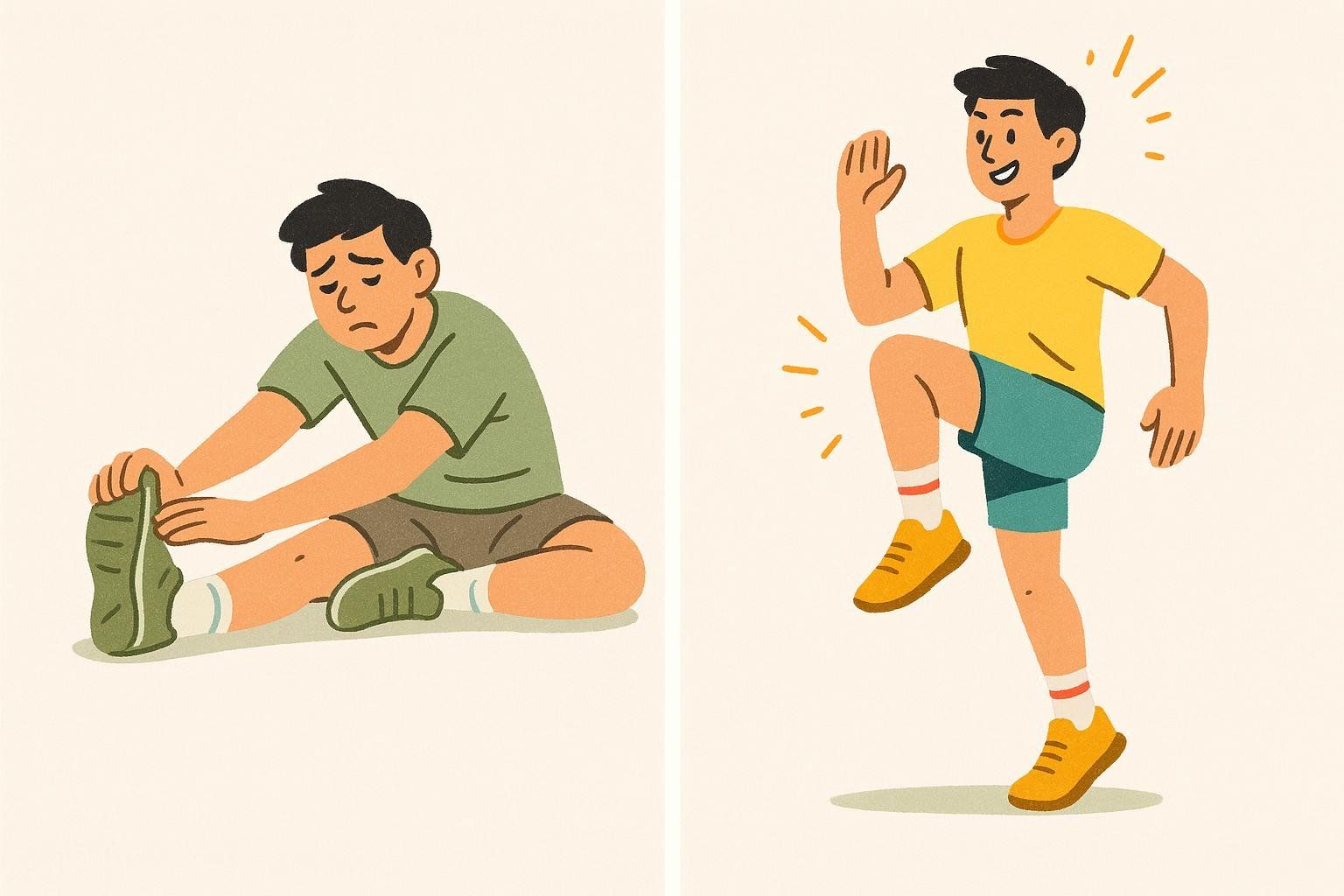
- Too long, too hard: If you’re sweating buckets and winded, you’ve crossed into “workout.” Trim volume; keep the last reps snappy.
- Skipping specificity: Always include 1–2 sets/strides of the actual movement you’ll perform.
- Static-stretch marathons: Keep pre-session static holds brief; save long holds for later.
- Ignoring ankles and hips: Running, squatting, and cutting all demand ankle dorsiflexion and hip control—add ankle rockers and lunges.
FAQ
How many exercises should a dynamic warm-up include?
- 6–8 movements are plenty when you follow the 4-part structure.
When should I finish the warm-up?
- Ideally within 5–10 minutes of your first working set or start whistle to retain the benefits.
Can a dynamic warm-up replace my workout if I’m sore?
- Not quite. Use it to ramp up, then keep the main set easy. For dedicated recovery days, try an active recovery routine or our 10-minute foam rolling.
Is a dynamic warm-up safe for older adults or people with arthritis?
- Yes—use smaller ranges, slower tempo, and stable support. See the Safety note above for specific modifications.
Track what your warm-up enables
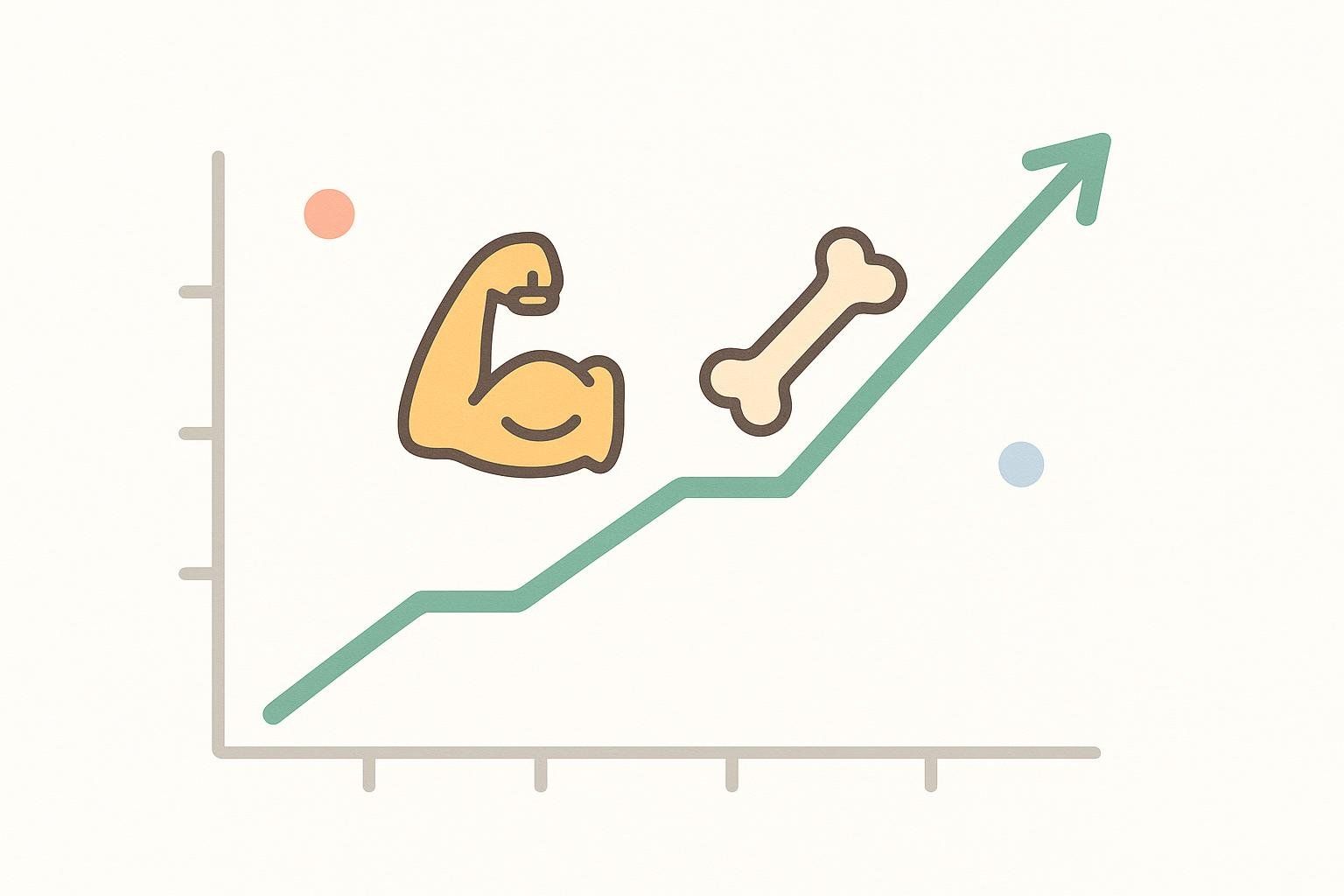
Dynamic warm-ups aren’t just about feeling better; they set the stage for quality training. If your goals include building muscle, trimming fat, or protecting bone health, a BodySpec DEXA scan gives objective data on fat mass, lean mass, bone density, and even visceral fat. Use periodic scans to verify that your smarter training—and your consistent warm-ups—are moving the needle in the right direction.
- New to DEXA? Read our guide: DEXA Body Scan: Complete Guide
- Ready to book? Check pricing and locations at bodyspec.com
Stay consistent, keep it dynamic, and treat your warm-up as the first, essential set of the day.
